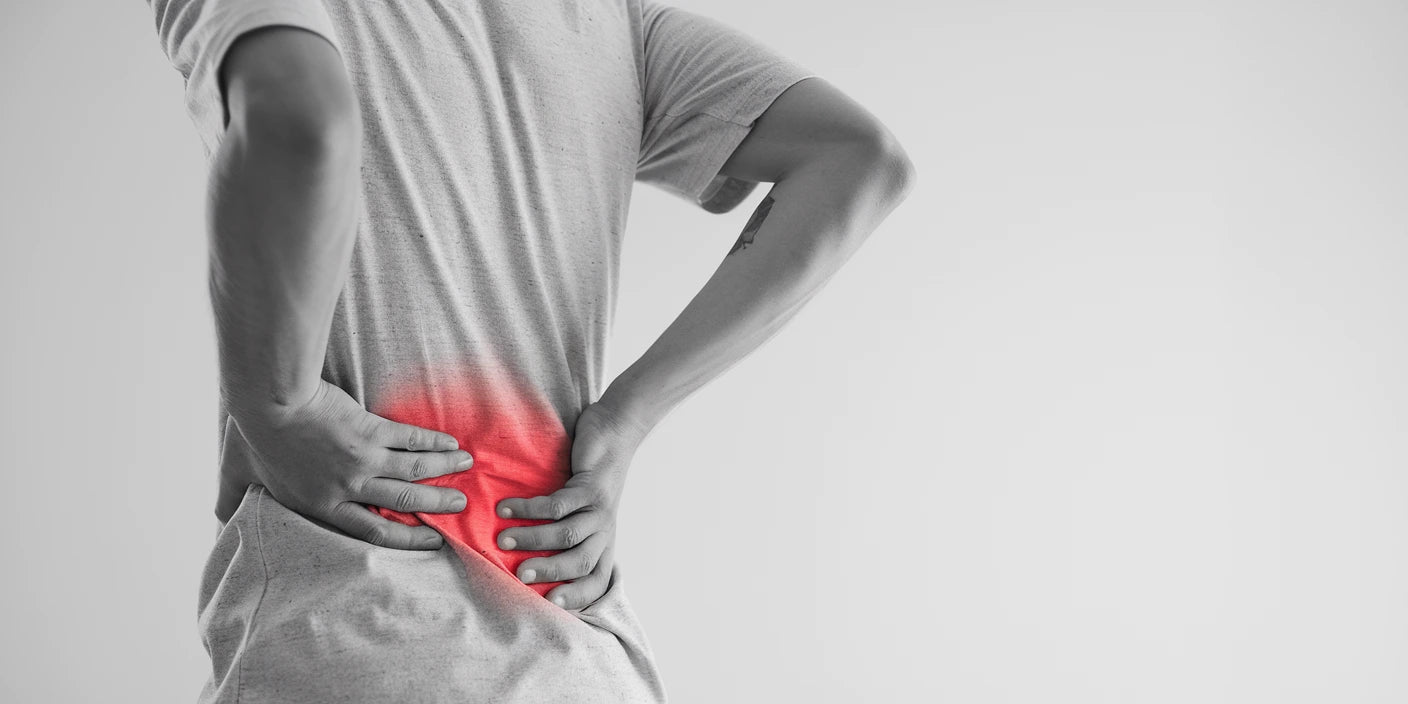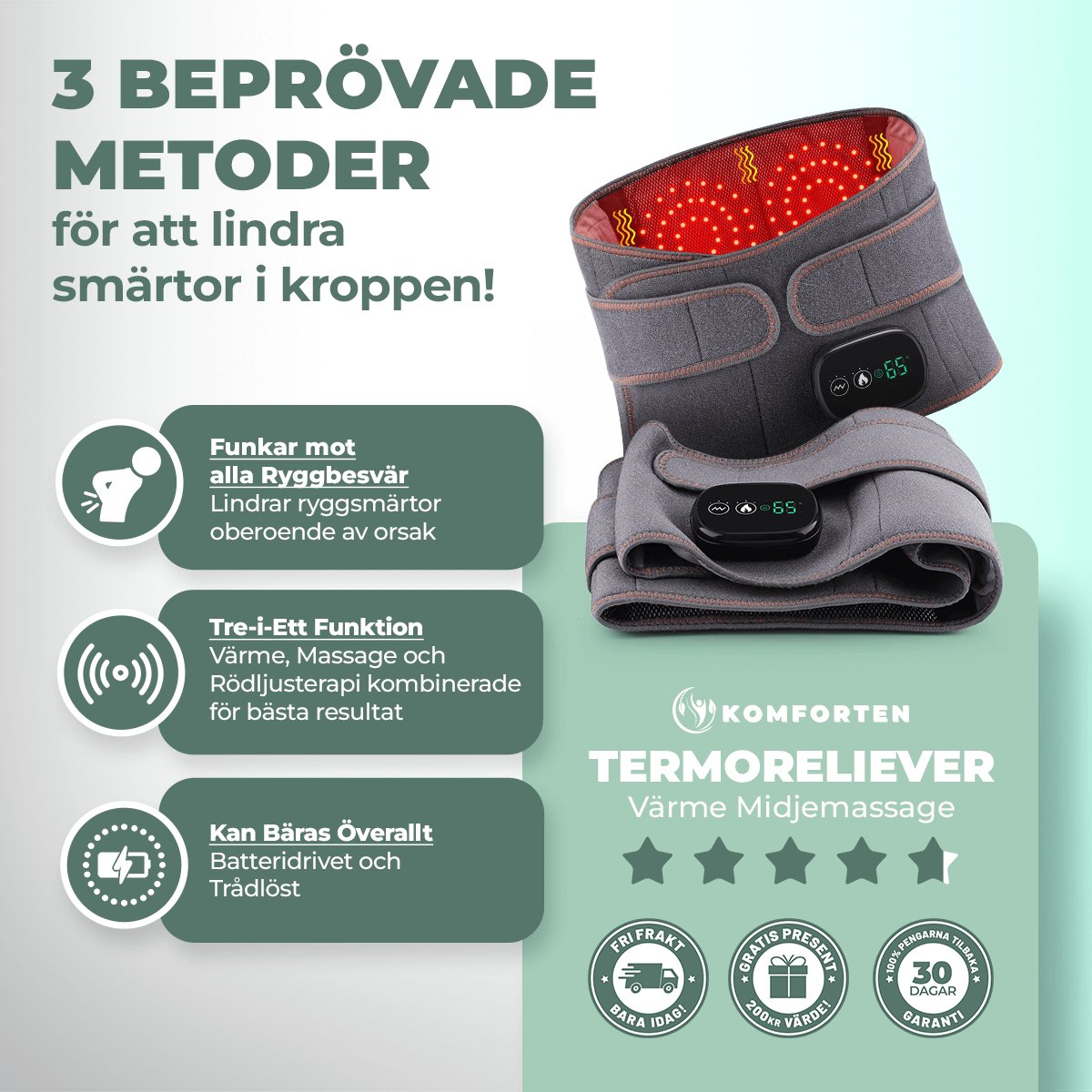Stiff Back: Causes, Symptoms, and Treatment

A stiff back is a common problem that can cause discomfort and limited mobility. This article reviews the most common causes, symptoms, and treatment options for a stiff back.
What is stiff back?
A stiff back means limited mobility and often pain, usually caused by muscle tension, poor posture or overuse. Many people experience stiffness in the back between the shoulder blades or in the lower back. This can affect everyday activities and cause discomfort when moving. A stiff back can have several causes that are important to understand in order to find the right treatment. Rest, stretching and physical therapy can help relieve stiffness and restore mobility.
Symptoms of stiff back
Common symptoms include:
- Limited mobility in the back
- Pain or aches, especially in the lower back
- Increased stiffness in the back in the morning
- Difficulty bending or twisting the back
- Muscle tension in the back and nearby areas
- Pain in the lower back with certain movements
- Discomfort between the shoulder blades during prolonged periods of sitting
- Stiff muscles in the back that can radiate to other parts of the body
- Muscle strain in the back can sometimes be experienced as a similar problem
Causes of stiff back
Several factors can contribute to a stiff back:
- Poor posture or prolonged sitting
- Overloading or improper loading of the back
- Age-related changes in the spine
- Osteoarthritis or other inflammatory conditions
- Muscle tension due to stress or physical exertion
- Inactivity leading to weak muscles
- Poor ergonomics in the workplace
- Inappropriate training or overtraining without proper technique
- Back muscle damage, or sometimes nerve pain in the back that contributes to stiffness
Diagnosis and treatment of stiff back
A stiff back is a common problem that is often caused by sitting still, poor posture or muscle tension. Stiffness can also occur after exercise, stress or incorrect loading. To relieve stiffness and improve mobility, a combination of movement, heat and support for the back is required.
Stretching and exercises
Regular stretching increases mobility and reduces stiffness in muscles and joints.
BackComfort™ provides support during exercises and helps stabilize the back for safer movement.
Heat treatment
Heat increases blood flow to stiff muscles and promotes relaxation.
Termoreliever™ offers effective heat therapy that helps release tension and relieve stiffness.
Massage and manual therapy
Massage softens muscles and releases tension that contributes to stiffness.
The effect can be enhanced by combining the treatment with Back Comfort™ and Termoreliever™ for deeper recovery.
Pain relief if needed
In more severe cases, anti-inflammatory drugs can be used temporarily to relieve pain.
With regular use of heat therapy, the need for medication can often decrease naturally.
Important to consider
If stiffness lasts longer than a few days or is accompanied by numbness, tingling, or severe pain, you should seek medical advice. However, the combination of movement, heat, and support is usually enough to regain flexibility and reduce stiffness in everyday life.

How RyggKomforten™ and Termoreliever™ can help with back stiffness
RyggKomforten™ and Termoreliever™ offer several benefits for people with stiff backs:
- Back Comfort™ provides support and improves posture
- Termoreliever™ offers heat therapy that can reduce stiffness and increase blood circulation
- The combination can help relieve pain and improve mobility
- The products can be used both during activity and rest for continuous support
- RyggKomforten™ provides particularly good support for stiffness between the shoulder blades.
- Termoreliever™ can be used in the morning to reduce morning stiffness – something common with back pain in the morning
Conclusion
A stiff back can be uncomfortable and limiting, but with the right treatment and support, most people can experience significant improvements. By combining regular stretching, appropriate exercises, and the use of supportive devices such as BackComfort™ and Termoreliever™, many people can effectively manage their symptoms and improve their mobility. It is important to listen to your body's signals and seek professional help if stiffness persists or worsens.
Remember that regular movement is key to preventing and treating a stiff back. By incorporating simple stretching routines into your daily life, you can reduce the risk of recurring problems. If you suspect a more serious condition, such as a herniated disc in your back , medical advice should be sought.
Frequently Asked Questions (FAQ)
Why is my back stiff in the morning?
Morning stiffness can be caused by reduced blood circulation during the night and fluid accumulation in the joints. It can also be a sign of inflammation or osteoarthritis.
How can I reduce stiffness in my lower back?
Regular stretching, light exercise, and the use of heat therapy such as Termoreliever™ can help reduce stiffness.
Can I use the Neck Comfort™ while I work?
Yes, Neck Comfort™ can be used during various activities to support a correct neck position.
How long should I use Termoreliever™ to relieve a stiff back?
Use Termoreliever™ according to product instructions, typically for 15-20 minutes at a time. Consult a physician for personalized recommendations.
When should I seek medical attention for a stiff back?
If the stiffness is persistent, worsens over time, or is accompanied by other symptoms such as fever or unexplained weight loss, you should consult a doctor.

